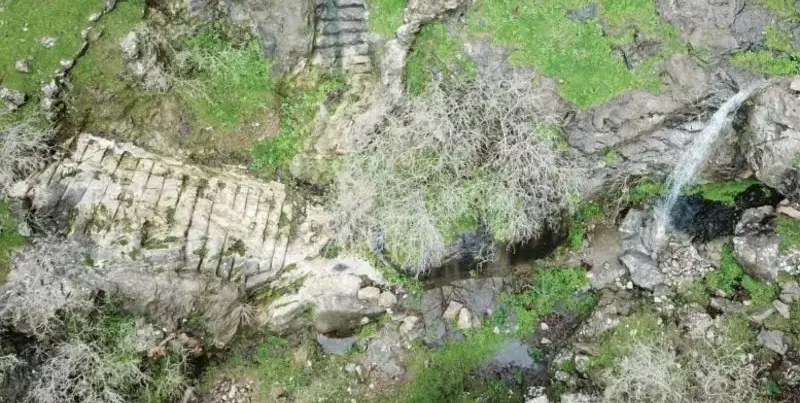Photosynthesis is the basis of life on Earth, but climate change increasingly threatens this important process. Thanks to advanced tools, scientists can now study how changes in temperature, humidity and light affect photosynthesis and thus the future of ecosystems. For Rakesh Tiwari, a postdoctoral researcher in the Department of Ecology and Genetics at Uppsala University, unraveling how plants adapt or fail to adapt to climate change is critical.
“I want to understand how species and ecosystems might function in the future,” said Tiwari, whose research has included rainforests in Puerto Rico, the Amazon and even the controlled climate of the Uppsala Tropical Greenhouse.
Using advanced tools to model extreme environmental conditions, Tiwari aims to understand the ability and potential limits of plants to adapt to climate challenges.
Observation of photosynthesis under pressure
Tiwari demonstrates his process in the humid atmosphere of an Uppsala greenhouse surrounded by tall palm trees and thick leaves, using a portable greenhouse gas analyzer designed to simulate different environmental conditions on leaves.
He places a hibiscus leaf in the instrument’s chamber, exposing it to intense light and heat. Leaf responses provide clues about how plants process sunlight, carbon dioxide, and water to create glucose and oxygen under various stresses.
“Since it is a portable instrument, I can take it to different places and analyze the photosynthetic response of plants to different environmental conditions,” Tiwari explained. “For example, I can change the temperature and light level and measure how this affects the rate of photosynthesis.”
This field work parallels his research in natural tropical environments, where he observed clear patterns of how photosynthesis responds to extreme heat.
The basis of life in the tropical forest
Tiwari participated in a research project at Amazon in 2017; here he and his colleagues used similar tools to monitor the state of the rainforest’s photosynthetic system.
“We used a similar fluorometer to track when photosystems began to fail. What we saw was a clear pattern. Trees in one of the hottest parts of the Amazon are already facing temperature conditions that can affect their photosynthetic mechanisms.”
The researchers found that plants in particularly hot and dry regions of the Amazon were already approaching their heat tolerance, and the rate of photosynthesis decreased, especially at high temperatures.
Limits of photosynthetic efficiency
The global efficiency of photosynthesis is surprisingly low, due in part to a process called photorespiration; typically no more than 5%. During photorespiration, an enzyme called rubisco mistakenly binds oxygen instead of carbon dioxide; This problem is exacerbated by high temperatures. This reduces the plant’s ability to produce energy efficiently.
“Another factor is the small holes, or stomata, in the plant’s leaf that regulate carbon dioxide uptake and water exchange,” Tiwari said.
‘In extreme heat they can be closed to save water. This is a survival strategy but it also reduces the rate of photosynthesis. Some trees have stomata open at high temperatures to use evaporative cooling as a leaf cooling mechanism.’
Implications for carbon storage
Tiwari’s research with Bob Muscarella’s team in Uppsala focuses on understanding temperature adaptations in tropical and temperate forests. Their latest findings suggest that temperature sensitivity to photorespiration varies significantly between species, which could impact reforestation strategies aimed at selecting species most resilient to climate change.
“The results of this understanding can better inform reforestation projects. For example, we can understand how vegetation may function in a warmer future and how we can adapt our future conservation and reforestation strategies,” Tiwari said.
However, Tiwari emphasizes that planting trees is not enough to protect the climate. Preserving mature forests provides unique environmental benefits.
“We cannot reproduce the complexity of a mature forest. It is more than just carbon capture; it supports biodiversity, regulates water flow and provides habitat for countless species,” he said.
Protecting the foundation of life
The United Nations Conference on Biodiversity COP16 will be held in Cali, Colombia, from October 21 to November 1, where leaders will discuss global conservation challenges. Tiwari hopes discussions at the conference will focus on protecting natural ecosystems, especially forests, which are indispensable in regulating carbon and preserving biodiversity.
“If we lose biodiversity and forest ecosystems, we lose the best natural carbon sequestration system on the planet,” he said.
“Technologies may one day emerge that could remove carbon dioxide from the atmosphere, but the more we rely on artificial solutions, the more we risk damaging the planet. We cannot afford these risks.”
A balance between innovation and natural solutions
Considering climate challenges, Tiwari’s research highlights the need for both conservation and innovation. While advanced tools have improved our understanding of photosynthesis, preserving existing ecosystems remains essential to achieving true sustainability.
“The best way to protect the environment is to protect the natural systems that already exist,” Tiwari said. Their work emphasizes a balanced approach: technological progress in crop production is combined with focused efforts to preserve natural habitats.
Tiwari’s research examines the complex responses of plants to climate change, highlighting the importance of preserving biodiversity in climate action. Through conservation and innovation, the scientific community can work to sustain the ecosystems that underpin life on Earth.













